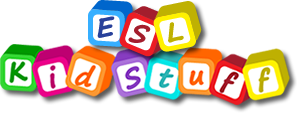Listening practice activities to use in your ESL Kids Classes which do not require CDs.
 Listening is a really important skill and there are lots of activities we can do in class to help develop this ability which do not require a formal listening practice set up (CDs, videos, etc.). Of course, having regular listenings in class is great but we can also combine this with listening to the teacher and fellow students. Below are some fun and interactive ways to provide listening practice in your lessons.
Listening is a really important skill and there are lots of activities we can do in class to help develop this ability which do not require a formal listening practice set up (CDs, videos, etc.). Of course, having regular listenings in class is great but we can also combine this with listening to the teacher and fellow students. Below are some fun and interactive ways to provide listening practice in your lessons.
Listen and draw a story
The teacher reads or makes up a story and as the students listen they draw the different scenes. You can help them by explaining which scene to draw. This can be done individually or in small groups on larger paper. This really helps you to see if the students are understanding and they will often ask questions if they don’t understand (because they’ll be so keen to draw the picture!)
Adjectives draw
After teaching various adjectives (big, small, long, short, tall, high, low, etc.) give each S a piece of paper. The teacher says an adjective / noun combination and the students have to draw it (e.g draw a long snake, draw a big house, etc.). It is fun to make silly words (draw a small elephant). The teacher should also draw so he/she can compare with the students’ pictures at the end.
Blindfold walk
This is really fun. Teach: go forward, go backwards, (3) steps, turn right / left. Then place a blindfold on a student and direct him/her around the room to eventually pick up a flashcard or object (e.g. “Go forward 3 steps, turn right, go forward 5 steps, now go backwards 2 steps, turn left, etc.). Finally, have students work in pairs – one blindfolded and one giving directions.
Listening with flashcards
Scatter a lot of flashcards that students have already leaned around the room and have the students sit on floor. Make up a story and incorporate all of the flashcard pictures … as you say the flashcard word the student nearest that card must touch it. For example, if students have learned lots of animal vocab the story could start “Once upon a time there was a farmer who had some cows (touch), sheep (touch) and pigs (touch). One day he was surprised to see lots of new animals on his farm. Next to the gate was a zebra (touch) and in the pond was a hippo (touch …), etc, etc.”.
Secret Message
Make two teams and have each stand in a line (parallel with each other). Take two students from the front of each line outside the classroom and whisper a sentence to them (e.g. “Tonight it is going to rain and tomorrow it is going to be sunny”). Then the students come back and whisper the sentence to the next S, who in turn whispers it to the next, and so on down the line. The student at the end either writes the correct sentence on the board or says the sentence to the teacher (depending on the level of the class). Points are awarded: 2 points for a perfect sentence, 1 point for nearly perfect and a bonus point if the team finished first and got the sentence right. Then do it again with two new students.
Guess what it is
Put students into teams of 3 or 4. Then everyone sits and listens carefully to the teacher for a description of something or someone (e.g. “This is an animal which lives in Africa and Asia loves taking baths. It flaps its ears to keep cool. It has a really long nose” – answer: elephant). Then each team discusses what they think it is before giving an answer. You can give the description sentence by sentence, encouraging the students to guess each time, until one group wins. You can start off with easy clues and slow speech but then progressively choose more difficult words and speak more quickly so the students really have to concentrate.
Put in order
Put your students in teams and have them sit together. Give each group around 10 objects or picture flashcards – each team must have the same things. The T now says all the words for items in front of the students … the students listen but mustn’t touch the objects. Finally, the teacher says “Put the objects in the correct order” and the teams have to put in order the objects in the order that the teacher said them. Make sure you write down the order as you say it or else you’ll forget!
Listening dialogs
Before class, prepare some dialogs based on the lesson theme. Also, prepare some comprehension questions based on the dialogs. In class, have two students read the dialog and the other students have to listen and then answer the questions. In higher level classes, make groups and give each group 15-20 minutes to write a dialog and questions (questions on a large sheet of paper). Then each team reads their dialogs while the rest of the class answers the questions which have been taped to the blackboard.
Number / Word bingo
Playing bingo requires students to listen carefully. You can use either numbers or words that they have been learning. Creating the bingo sheets and words takes a bit of time but once done can be used with other classes, time and time again.
Spelling Messenger
Put students in teams of three. S1 is given a word on a piece of paper and mustn’t show it to his/her team mates. He/She stands at the end of the room furthest from the board facing the wall. S3 is at the board facing the board. S2 acts as the messenger. S1 whispers the first letter to S2 who then runs and whispers it to S3, who in turn writes it on the board. S2 goes back and forth until the word is written on the board. All the teams compete – they have different words but all with the same number of letters. The first team to complete the word correct wins a point.
If you have some good ideas for listening activities, please share below!



great :))
Good ideas, thank you so much.
Thank you so much for sharing. They are useful for my students.
Thanta million for these amazing activities. I am taking them into my teacher’s treasure box and I even think about some of them how to transform them for online lessons.
This is brilliant, thank you for sharing
Guess the Music
In this activity, students will able to hear a music, and will able to identify the title of it. For example, you are executing a lesson about the usage of modals, so the music you should play must contain a modal verb. Then when the students discovered the title of the song, they are going to underline the modal verb(e.g. I believe I can fly, CAN as Modal). This activity is very limited for other type of lessons because its application depends on the connection of the topic to the structure of most songs.
Excellent ideas! thank you so much for sharing 😀
Thank u for share. Great post
Good ideas, thank you so much.
Thank u for share. Great post
Thank you so much for sharing. They are useful for my students.
Thank u for share. Great post
Very Nice …….thank U for sharing your Activities….. GOD BLESS U
Very helpful and supportive thank you so muuch!
I went through the articles and I found really fun and implementable in the classroom.
thank you for the idea. it can help us to our project
Activities are really interesting and helpful to teach our students thanks I think any parents can read and apply to their daily educating activities
Thank you so much for sharing. They are useful for my students.
Thanks a lot for sharing these ideas!
When one of my students performed a story in front of the classroom I always asked other students questions about that story. This was also a good listening activity.
Also my students loved to play a spelling game, which helped to develop their listening and spelling skills. All the students stood up and I gave them a word (starting from an easy one and going to the complicated at the end). Then the first student said the first letter of that word and they started to spell it one by one (each student said one letter which came next). If somebody was unattantive and didn’t catch up what was the last letter or simply didn’t know it – that student took a sit till the end of the game. The last standing student was a winner 🙂 Sometimes I had two or three students standing and spelling all the difficult words I gave them, so I announced them all as the winners.
that is great 😍 I like it
thank you for these ideas. just about to try the secret message one…..will let you know how much fun we have 🙂 🙂 🙂
How about writing on the board some “secret words”; then read a story, and have the students raise their hand (or shout the word or ??) when they hear it. First to reach a certain # of correct words wins.
Activities are interesting and helpful to teach our students thanks and enrich it thanks
Thank you for sharing these activity with us which will help us in our schools and reports.
How about doing an outdoor (or indoor)sound hunt; where students are giving a list of sounds they are to listen for whether inside or outside. They can play either individually or in groups. They will then listen for the sounds and tick or mark them off their list. The first group or student who finishes first wins the game
Some good ideas here which help me in my role in the school
I found these very helpful & supportive of the students im trying to support well done & thanks.